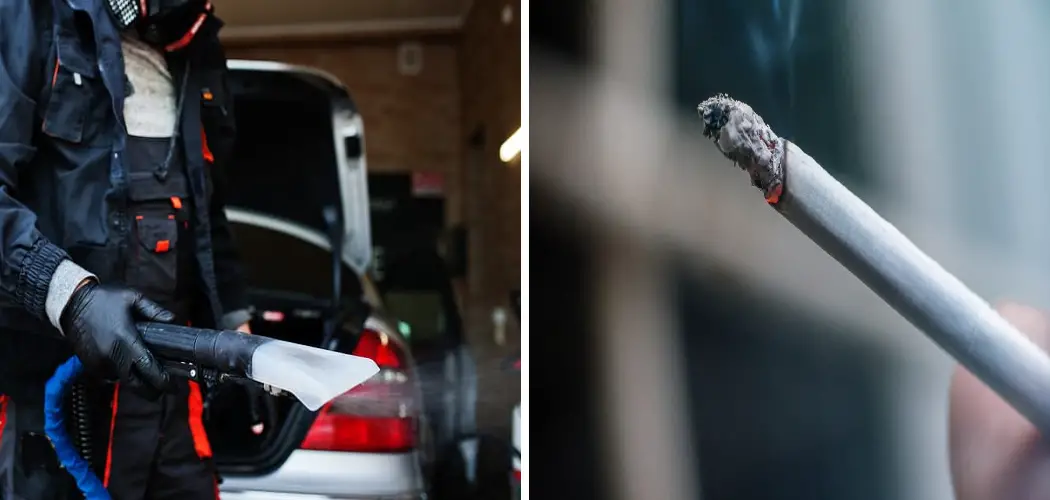Removing the smell of smoke from a garage can be challenging, but it’s not impossible with the right approach. Whether the odor comes from cigarettes, a fire, or another source, lingering smoke can be unpleasant and persistent. Fortunately, with a combination of cleaning, ventilation, and odor-neutralizing techniques, you can restore your garage to a fresh and clean state.
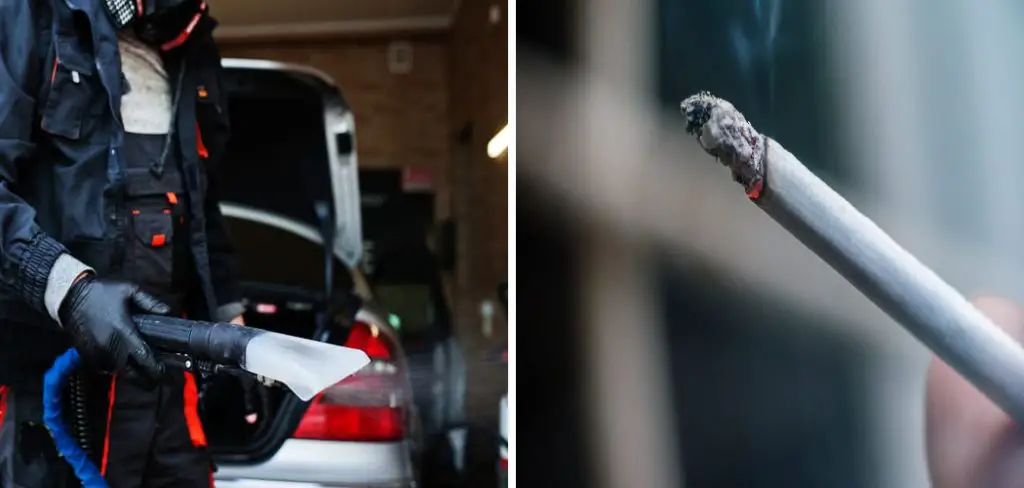
This guide on how to get smoke smell out of garage will walk you through effective methods to eliminate smoke smell from your garage step by step.
Why Does Smoke Smell Linger?
Before diving into the methods to get rid of the smoke smell in your garage, it’s important to understand why the odor lingers in the first place. Cigarette smoke, for example, contains more than 4,000 chemicals that can cling to surfaces and penetrate fabrics. These particles are known as third-hand smoke and can remain for days or even months after initial exposure.
In addition, smoke particles can also settle into porous materials such as walls, floors, and furniture. The longer these particles remain in a closed space like a garage, the more they will seep into every nook and cranny, making it difficult to remove the smell completely.
Needed Materials
- Air Purifier or Air Filter
- Odor Eliminating Sprays or Candles
- White Vinegar and Water Solution
- Baking Soda
- Lemon Juice or Essential Oils for Natural Scenting
7 Steps on How to Get Smoke Smell Out of Garage
Step 1: Ventilate the Area
The first step in removing the smell from your garage is to properly ventilate the space. Open all windows and doors to allow fresh air to circulate and help disperse the trapped odors. For enhanced airflow, set up fans to push the stale air out and bring fresh air in.
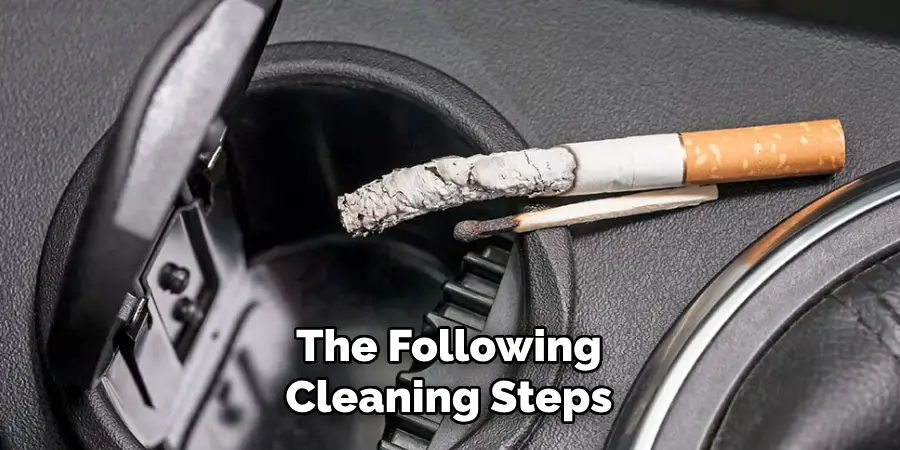
Position the fans near openings to create a cross-ventilation effect, which will speed up the process. Ventilating the area is essential as it lays the groundwork for the following cleaning steps to be more effective.
Step 2: Cleaning and Deodorizing
Once the area is properly ventilated, it’s time to start cleaning and deodorizing. Begin by removing any clutter or debris in the garage. This will not only make the space easier to clean but also eliminate any potential sources of odor. Next, sweep or vacuum the floors and wipe down all surfaces with a mixture of warm water and mild detergent. For particularly stubborn smells, you may need to use a stronger cleaner specifically designed for smoke odor removal.
After cleaning, it’s important to deodorize the space. One effective method is using activated charcoal or baking soda. Sprinkle either substance on carpets, furniture, and other surfaces that have been affected by smoke. Let it sit for a few hours or even overnight before vacuuming it up.
Step 3: Remove Any Lingering Smoke Smell
While cleaning and deodorizing can help remove the majority of smoke odor, there may still be lingering smells in the air. To combat this, you can use natural methods such as boiling vinegar or simmering cinnamon sticks on the stovetop, to help neutralize any remaining odors.
Another option is to use an air purifier with a HEPA filter. These filters are designed to capture even the smallest particles, including smoke particles that may be circulating in your home.
Step 4: Prevention Tips
After successfully removing smoke odor from your home, it’s important to take steps to prevent future occurrences. Here are some prevention tips to keep in mind:
- Avoid smoking inside your home.
- Regularly clean and maintain any fireplaces or wood-burning stoves.
- Keep candles and incense away from flammable materials.
- Install smoke detectors and regularly check their batteries.
- Have a fire safety plan in place for emergencies.
By following these prevention tips, you can help reduce the chance of smoke odor entering your home again. It’s also important to address any potential sources of smoke such as nearby construction sites or wildfires.
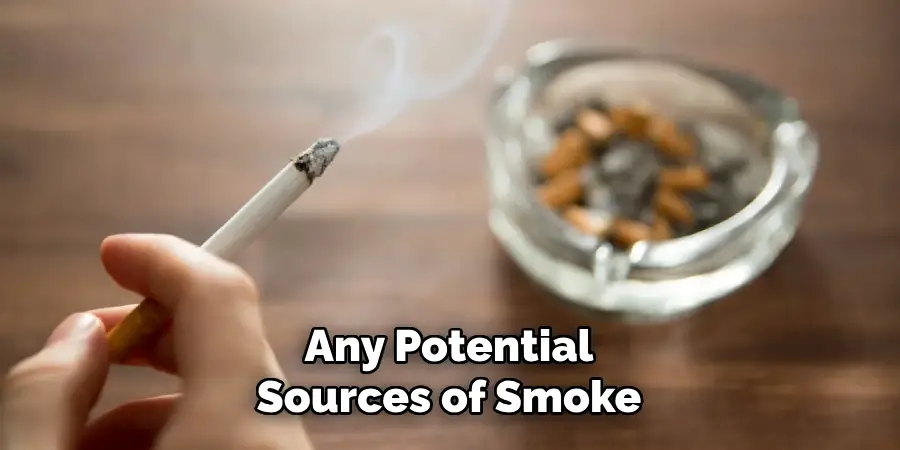
Step 5: Removing Smoke Odor
Once the source of the smoke has been addressed, the next step is to focus on removing the residual odor. Start by ventilating your home thoroughly by opening windows and using fans to help circulate fresh air. Deep clean all surfaces, including walls, floors, and ceilings, using a mixture of vinegar and water, which is effective in neutralizing smoke smells. Wash curtains, upholstery, and any linens in your home using odor-eliminating detergents, if possible.
For carpets, consider steam cleaning or using baking soda to absorb lingering odors. If the smell persists, invest in air purifiers with HEPA filters to remove fine smoke particles or hire a professional remediation service for thorough deodorization. These steps collectively help restore a fresh atmosphere in your living space.
Step 6: Follow Up with Health Precautions
After addressing the physical damage and odor, it’s important to take care of your health as well. Exposure to smoke can have harmful effects on the respiratory system, especially for those with pre-existing conditions such as asthma or allergies. It’s recommended to wear a mask when entering the house and while cleaning up and to consult a doctor if you experience any symptoms such as difficulty breathing or persistent coughing.
Additionally, open windows and doors while cleaning to allow for proper ventilation. Use gloves and other protective gear when handling potentially hazardous materials like soot or chemicals. Remember to also dispose of any contaminated items properly, following local regulations.
Step 7: Prevention Tips
To prevent a chimney fire from occurring in the first place, it’s important to have regular maintenance and cleanings done by a professional. This includes inspections of both the exterior and interior of the chimney, as well as the removal of any buildup or obstructions.
Following these steps on how to get smoke smell out of garage and practicing proper fire safety precautions can greatly reduce the risk of a chimney fire. Additionally, it’s important to use dry and seasoned wood when burning fires, as wet or green wood can create excess smoke and creosote buildup.
Do You Need to Use Professionals?
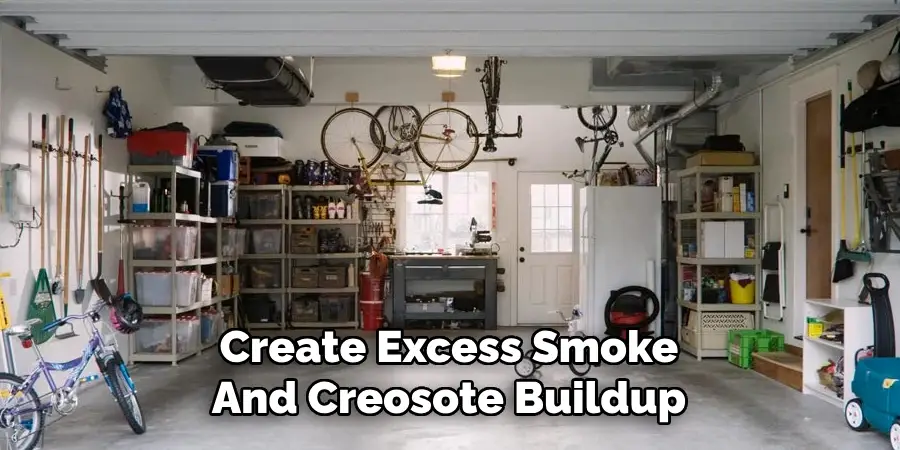
While some chimney maintenance can be done on your own, such as removing small amounts of surface debris or checking for visible obstructions, hiring a professional is highly recommended for more thorough care. Certified chimney sweeps have the expertise and equipment needed to perform detailed inspections and cleanings that are essential for the safety and efficiency of your chimney.
Professionals can also identify structural issues, such as cracks or damage, that might not be obvious to the untrained eye. Investing in professional services not only helps prevent costly repairs down the line but also ensures that your home remains safe from potential hazards like chimney fires or harmful smoke accumulation.
Frequently Asked Questions
Q: How Often Should I Clean My Chimney?
A: It is recommended to have your chimney cleaned and inspected at least once a year, even if you do not use it frequently. This will help prevent any potential hazards and ensure that your chimney is functioning properly.
Q: How Do I Know If There Is Creosote Buildup in My Chimney?
A: Signs of creosote buildup can include a strong odor coming from your fireplace, black or brown residue on the walls of your chimney, or a thick layer of soot inside. It’s important to have this checked by a professional as soon as possible to prevent a potential fire hazard.
Q: Can I Use Any Type of Wood in My Fireplace?
A: No, it’s important to only use dry and seasoned wood in your fireplace. Wet or green wood can create excess smoke and increase the risk of creosote buildup. Hardwoods like oak, maple, or cherry are ideal for burning in a fireplace as they produce less smoke and burn longer.
Q: How Often Should I Have My Chimney Inspected?
A: It’s recommended that your chimney be inspected at least once a year by a certified chimney sweep. This will ensure that any potential issues, such as creosote buildup or animal nests, are detected early on and can be properly addressed. The best time for an inspection is before the start of the burning season, usually in the fall. However, it’s also a good idea to have a chimney inspection after any major weather events or if you notice any unusual changes in your fireplace’s performance, such as excessive smoke or odors.
Q: Are There Any Precautions I Should Take Before Using My Fireplace?
A: Yes, it’s important to take some precautions before using your fireplace. Make sure the damper is open to allow proper ventilation and clear away any debris or obstructions from the opening. It’s also a good idea to have a fire extinguisher nearby in case of emergencies.

Conclusion
Taking the time to properly maintain and care for your chimney not only improves safety but also enhances the efficiency of your fireplace. By scheduling regular inspections, cleaning out smoke residue, and using the right type of firewood, you can prevent issues such as unpleasant odors, creosote buildup, and even potential fires.
With these steps on how to get smoke smell out of garage, you can enjoy a warm and cozy fireplace while keeping your home safe and free from risks.
I am Rick. I grew up helping my dad with his handyman service. I learned a lot from him about how to fix things, and also about how to work hard and take care of business. These days, I’m still into fixing things- only now, I’m doing it for a living.
I’m always looking for new ways to help people grow and develop. That’s why I have created this blog to share all my experience and knowledge so
that I can help people who are interested in DIY repair.

